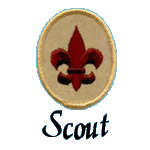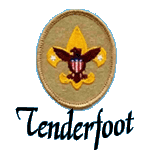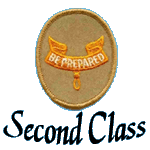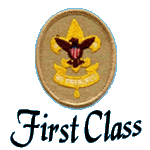The Scouting America advancement program is subtle.
It places a series of challenges in front of a Scout in a way that is fun and educational.
As Scouts meet these challenges, they achieve the aims of Scouting.
One of the greatest needs of young people is confidence, and there are three kinds they need: confidence in themselves, in peers, and in leaders.
Educators and counselors agree that the best way to build confidence is through measurement.
Self-confidence is developed by meeting a challenge or standard.
Peer confidence develops when the same measuring system is used for everyone and all must meet the same challenge to receive equal recognition.
Confidence in leaders comes from consistency, when leaders use a single standard of fairness.
A Scout badge recognizes what a Scout is able to do; it is not a reward for what they have done.
Standards for joining a troop and for advancement are listed in the latest printing of the Scout Handbook and the current Scouts BSA Requirements book.
Advancement supports the aims of Scouting: citizenship, growth in moral strength and character, and mental and physical development.
As a Scout advances, they are measured and grow in confidence and self-reliance.
The ranks of Scouting are shown below.
To view the specific requirements for each rank, click on the image.
|
Scout |
|
The Scout badge is not considered a rank.
Instead, it symbolizes a Scout who has either earned the Arrow of Light from Cub Scouting or completed the 5th grade and is at least 10 years old.
This marks the beginning of the Scout’s journey through Scouting America.
|

|
Tenderfoot |
|
The Tenderfoot rank symbolizes that a Scout has met all of the requirements listed in the Scout Handbook.
They have gained camping skills and learned the Scout Oath, Law, Slogan, and Motto.
The Scout has also learned basic first aid skills that can assist them throughout their Scouting journey.
|

|
Second Class |
|
The Second Class rank symbolizes that a Tenderfoot Scout has met all of the requirements listed in the Scout Handbook.
They have learned how to use a map and compass and how to safely use and care for a knife, saw, and ax.
The Scout continues to participate in troop activities and learn more about safety, nutrition, and service to the community.
|

|
First Class |
|
The First Class rank symbolizes that a Second Class Scout has met all of the requirements listed in the Scout Handbook.
They have participated in campouts and learned how to plan meals, shop for food, and properly store it.
The Scout has also learned about camp gadgets, lashings, and advanced first aid techniques.
|

|
Star |
|
The Star rank symbolizes that a First Class Scout has met all of the requirements listed in the Scout Handbook.
They have remained active in the troop and earned the required number of merit badges.
The Scout has also participated in service projects and served in a leadership position.
|

|
Life |
|
The Life rank symbolizes that a Star Scout has met all of the requirements listed in the Scout Handbook.
They have continued to stay active in the troop and earned the required number of merit badges.
The Scout has also been involved in service projects, served in a leadership role, and used the EDGE method to teach younger Scouts.
|

|
Eagle |
|
The Eagle rank symbolizes that a Life Scout has met all of the requirements listed in the Scout Handbook.
It is the highest rank in Scouts BSA and represents achieving the aims of Scouting.
The Scout has remained active in the troop, earned the required merit badges, served in leadership roles, and planned, developed, and led a service project that benefits the community.
|

|
Eagle Palm(s) |
|
Eagle Palms recognize that an Eagle Scout has remained active in the troop for three months after earning the Eagle Scout Award.
To earn Palms, the Scout must be under 18 and earn five additional merit badges for each Palm.
There are three levels: Bronze (5 merit badges), Gold (10 merit badges), and Silver (15 merit badges).
|

|























